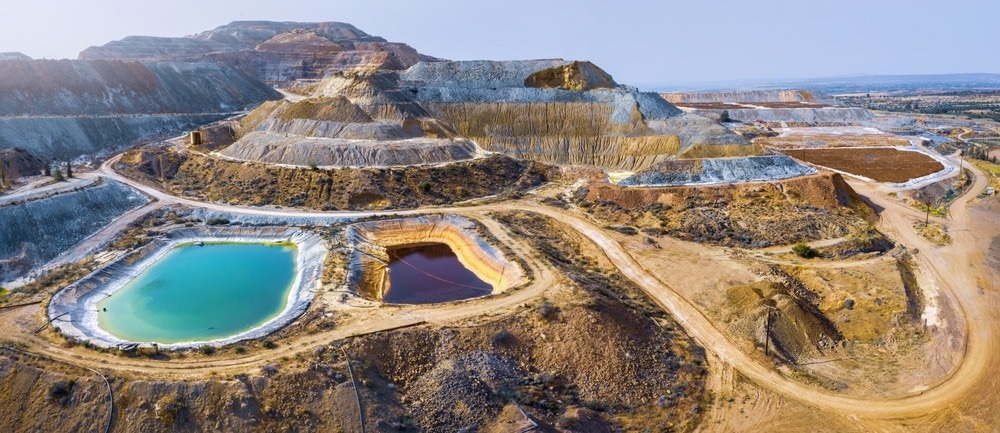EU-backed Mine.io project sets the stage for a smarter, greener future in mining by tailoring digital protocols to diverse sites across Europe.

Image Credit: Anna Kucherova/Shutterstock.com
A recent study in Resources explored the evolving landscape of mining practices within the European Project Mine.io. The aim was to establish standard protocols that define the functional and non-functional needs of diverse mining sites, supporting sustainable development and digital transformation.
By proposing a framework for integrating Industry 4.0 principles into mining operations, researchers lay the foundation for future-ready and environmentally responsible mining.
Integrating Smart Technologies in Mining Operations
Mining has long played a critical role in industrial development, providing the raw materials needed for infrastructure, energy, and manufacturing. However, the industry is under growing pressure to meet sustainability targets and reduce its environmental footprint. In response, the European Union has launched initiatives such as Mine.io, aimed at modernizing mining through smart technologies, automation, and data-driven decision-making.
Integrating Industry 4.0 tools—such as Internet of Things (IoT) sensors, artificial intelligence (AI), data analytics, and cloud-based systems—offers new opportunities to improve mining operations. These technologies support real-time monitoring, predictive maintenance, and more efficient resource management, helping to boost productivity while minimizing environmental impact.
For these systems to be effective, they must align with the specific needs of each mining site. This study focuses on developing customized protocols to support the successful adoption of these innovations across various mining environments.
Tailored Protocols for Diverse Mining Environments
Researchers investigated the Mine.io project to develop a digital architecture that supports sustainable mining practices across Europe. They assessed various mining sites to identify the technological and operational requirements crucial for digital integration. The methodology combined cartographic analysis, engineering assessments, and stakeholder consultations across institutions in Spain, Greece, Germany, and Cyprus.
Advanced mapping tools and data collection techniques were utilized to characterize mining sites, considering factors such as geological conditions, infrastructure readiness, environmental constraints, legacy practices, and existing technological baselines. A key outcome was classifying mining sites based on their readiness for digital transformation, enabling the development of specific protocols tailored to each type of mine.
Technological Readiness and Stakeholder Engagement
The study showed significant differences in technological maturity across mining sites; some operations have adopted advanced monitoring systems and automation tools, while others still rely on manual processes and outdated infrastructure. This disparity highlights the need for flexible protocols that can adapt to varying levels of digital readiness.
Stakeholder engagement was crucial in the development of the protocol. By involving operators, engineers, and policymakers, researchers ensured that proposed solutions were practical and aligned with industry needs. This approach also helped identify non-functional requirements, including regulatory compliance, data security, and user training.
Researchers also confirmed that integrating Industry 4.0 technologies into mining operations is feasible and beneficial. Pilot implementations within the Mine.io project, including sensor networks for environmental monitoring, AI-driven predictive maintenance, and digital twins for site simulation, have demonstrated effectiveness in enhancing efficiency, reducing downtime, and minimizing environmental impact.
Comparisons between traditional and digital approaches highlighted that digital monitoring can detect equipment issues before failures occur, improve safety, and reduce losses. Data-driven resource management can optimize extraction processes, minimize waste, and conserve energy.
Implications for Sustainable Mining Practices
The proposed protocols offer a practical roadmap for digital integration, helping mining operators choose and implement smart technologies effectively. By addressing functional and non-functional requirements, these frameworks ensure that digital solutions are technically sound and aligned with environmental goals. Mining companies can use the protocols to assess their current level of technological maturity, pinpoint areas for improvement, and make informed decisions about where to invest next.
Thanks to their modular structure, the protocols support a phased approach to adoption. This allows operators to begin with basic digital tools and gradually scale up to more sophisticated systems—a particularly useful strategy for small and medium-sized enterprises working with limited resources.
The protocols are designed to support regulatory compliance by embedding safety standards, environmental guidelines, and data governance principles into the overall system design. Aligning with these policy frameworks boosts operational sustainability, strengthens credibility, improves access to funding, and helps build public trust.
A Roadmap for the Future of Mining
This study represents an important step toward developing comprehensive protocols that address the mining industry's diverse operational and sustainability needs.
The findings underscore the crucial role of digitalization and stakeholder engagement in promoting environmentally responsible mining practices. As the sector evolves, the proposed frameworks provide a practical roadmap for integrating advanced technologies while maintaining compliance with environmental standards.
By fostering the adoption of smart solutions, this research contributes to shaping a mining industry that remains economically important yet aligned with global sustainability goals. Future work should focus on validating these protocols through real-world implementations and assessing their long-term impacts on operational efficiency and environmental performance. Overall, the Mine.io project demonstrates how collaborative approaches can revolutionize the mining sector, paving the way for a more sustainable and environmentally responsible industry.
Journal Reference
Blázquez, C, S. et al. (2025, October). Towards the Establishment of Protocols for Defining the Requirements of Different Mining Site Contexts Within the European Project Mine.io. Resources, 14(10), 163. DOI: 10.3390/resources14100163, https://www.mdpi.com/2079-9276/14/10/163
Disclaimer: The views expressed here are those of the author expressed in their private capacity and do not necessarily represent the views of AZoM.com Limited T/A AZoNetwork the owner and operator of this website. This disclaimer forms part of the Terms and conditions of use of this website.